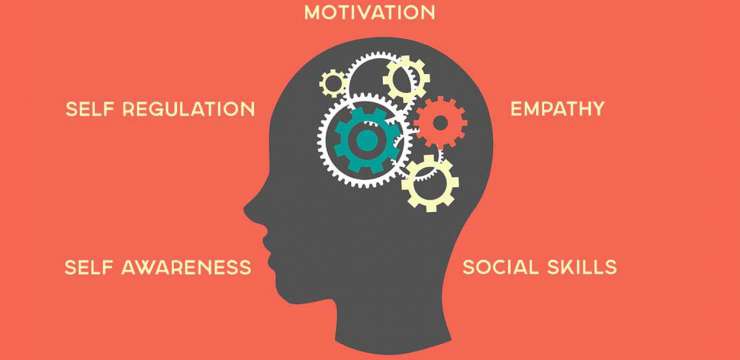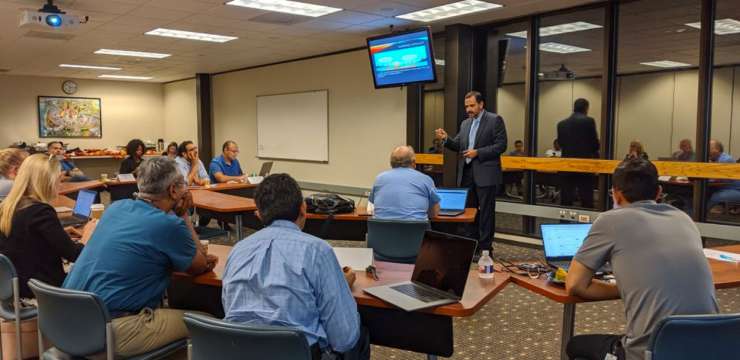Your leadership is contagious. Boost your EI with these actions.
Today, emotions are heightened, with anxiety, apprehension, fear, uncertainty, overwhelm, and worry. You and your team may be feeling some or all of these moment to moment.
We have what the military call a VUCA environment: Volatility, Uncertainty, Complexity, and Ambiguity.
There are many unknowns and many feelings, and this is when people need their leaders to step up, connect, support, and soothe.
This is the Leadership Super Bowl. Your leadership is more contagious than the virus. My previous blog post focused on self-management while this one focuses on managing others.
1. Communication
You want to normalize, fill in whitespace, and acknowledge. This means:
- Ask people how they are doing with the coronavirus, what are their biggest concerns or challenges are, what feelings they are having, and how their family is.
- Share your feelings and how you are coping proactively.
- Remember to stay in their story versus stealing their story and talking about yourself too much.
- Normalize their feelings by reminding them of the human condition: that all over the world, we are in this together. Despite “sheltering in’ we are all connected and can help each other.
- To enhance clarity, fill in the White Space of what you know and assure them of the capabilities and strengths you and the team have. In short, “we will get through this” should be stated frequently.
- Acknowledge the progress made so far and individual successes. Share what you feel grateful for.
2. Empathy
Seek to understand before you are understood. This is one of the lessons from Stephen Covey’s Seven Habits of Highly Effective People. One way for people to feel you understand them is if you give them back their perspective by sharing what you heard them say (both the content and the feelings).
3. Teamwork and collaboration
- Connect before you direct. We all have the human need to connect to others, even more so now with social distancing and sheltering in. So, ask about their family, their challenges, the support they need. You have to charge up their connection to you as a stable, caring, and certain leader before they can let go of some of their fears and apprehensions. It is having their inner child feel safe and secure before you can speak to their adult.
- Now with many companies sheltering in or working from home, try to connect now daily with your team on the phone or video. If you are digital with them, have each member share how they are doing and at least verbally be present.
- Use team huddle calls or videos for the human connection and strengthening the team bond.
- Acknowledge the progress made so far and individual successes. Great to have them share them with others.
4. Change leadership using threat-to-challenge and circle of influence
- Threat-to-challenge: Just like changing your mindset from a threat to a challenge, this would be the same conversation with your people. How do we turn this into a challenge, opportunity, or new learning?
- Circle of Influence: With this Covey principle, the goal is to identify what things that are concerns for them that they do have influence over now. Then, the focus shifts to the plan or the next step for them to act on.
The concerns are emotion-laden. This is where you use your empathy to hear and understand them. Then, when they feel understood, you can ask Circle of Influence questions, which are more cognitively laden. These thinking questions have an inverse relationship to one’s emotional activation, meaning it is hard to be at the same level of emotionality when you are activating the rational executive network.
So, ask: Is this something you can have influence over? If so, what is it? What does it look like? What are the actions you will take? What resources will you need? What kind of obstacles will you encounter? Who else can help you with this? How will you bring them on board?
Then ask: What is your first step?
All of these cognitively laden questions get them thinking, planning, being strategic and resourceful and as a consequence, less emotional. The Circle of Focus is the first priority in the plan.
It helps if they write these down to lessen their overwhelm. Ask: Is there something you have influence over? If so, what is it?
5. Development of others using MBQC and POWRR
- MBQCmeans management by a quick call rather than MBWA (management by wandering around).
- Identify two or three key things that each of your people is working on in their development plan. Also, identify their strengths, and then have them use those even more. Talk to them about their strengths and point out some they might not see. It is more empowering and easier to be a top 10 percent performer by doing their strengths more.
- Build and broaden: Ask how can they bring their strengths to a development area. Like trustworthiness and good relationship building, could they bring that to conflict situations or building relationships in other departments?
- Utilize POWRR:This where you turn any success into a repeatable process. So, when something works, you want to Point Out What was Right that you want to see Repeated.
- Contribute to their emotional bank accounts: Ideally, you want a running balance of about $1000 with each direct report. You add to their emotional bank account in small deposits, POWRR and having a 3:1 positive to negative ratio interactions. Positive interactions can add $25 to $40 to the mutual bank account. This is important because, in emergencies, volatile and uncertain times and their resultant consequences like conflict and strained relations can be a withdrawal of $200-$300 or so. You may have to ask them to do something or make a sacrifice that they feel is a huge withdrawal. Identify your bank account with each team member or family member and keep making small deposits.
- Use these strategies with your family and friends: As you are sheltered home, who do you want to have even more contact with to support them? Also, who is most nourishing for you in your family and friend network and connect with them more often.
6. Conflict management
First, give your people and family the benefit of the doubt: Their reactions most likely are from anxiety and stress. Use a soft start-up and the 3 “I”s.
- Soft start-up: If you decide to bring up a potentially incendiary topic, use a soft start-up versus a harsh start-up. For example, now that you’re trying to work at home with your family being around, it’s easy to start off harsh, as in, “Don’t you see I am trying to work here? Can’t you talk in the other room?” Instead, a soft start-up might be, “Looks like you are having fun. I was wondering if you could take that into the other room, as I am having a hard time focusing?”
- 3 “I”s: One strategy that encompasses the soft start-up is when there is conflict and you choose to talk about it is the 3 “I”s. It allows you to understand the person’s motives first before you express your feelings. They are 1: Intentions: What were your intentions when you said or did X? 2: Impact: You may not have realized but the impact on me, us, the team, etc. was… 3: Instead: In the future, instead of X, I would rather you do or say…
This is the time to be more focused on your people; to be the beacon and the soother. Upgrade your Emotional Intelligence with the practices above, each of which you can do in a few moments.
These micro-initiatives can have macro-impact. Boost your VUCA: Vision, Understanding, Clarity, and Understanding. Your team and family needs you the most now.
References
Covey, S. (1989) Seven Habits of Highly Effective people. New York: Simon and Schuster.
Germer, C. and Neff, K. (2018) The Mindful Self-Compassion Workbook: A Proven Way to Accept Yourself, Build Inner Strength, and Thrive. New York: Guilford Press.
Newberg, A. and Waldman, M.R. (2014) In their Words Can Change our Brain.
Nadler, R. (2011) Leading with Emotional Intelligence: Hands-on Strategies to Build Confident and Collaborative Star Performers. New York: McGraw-Hill.




